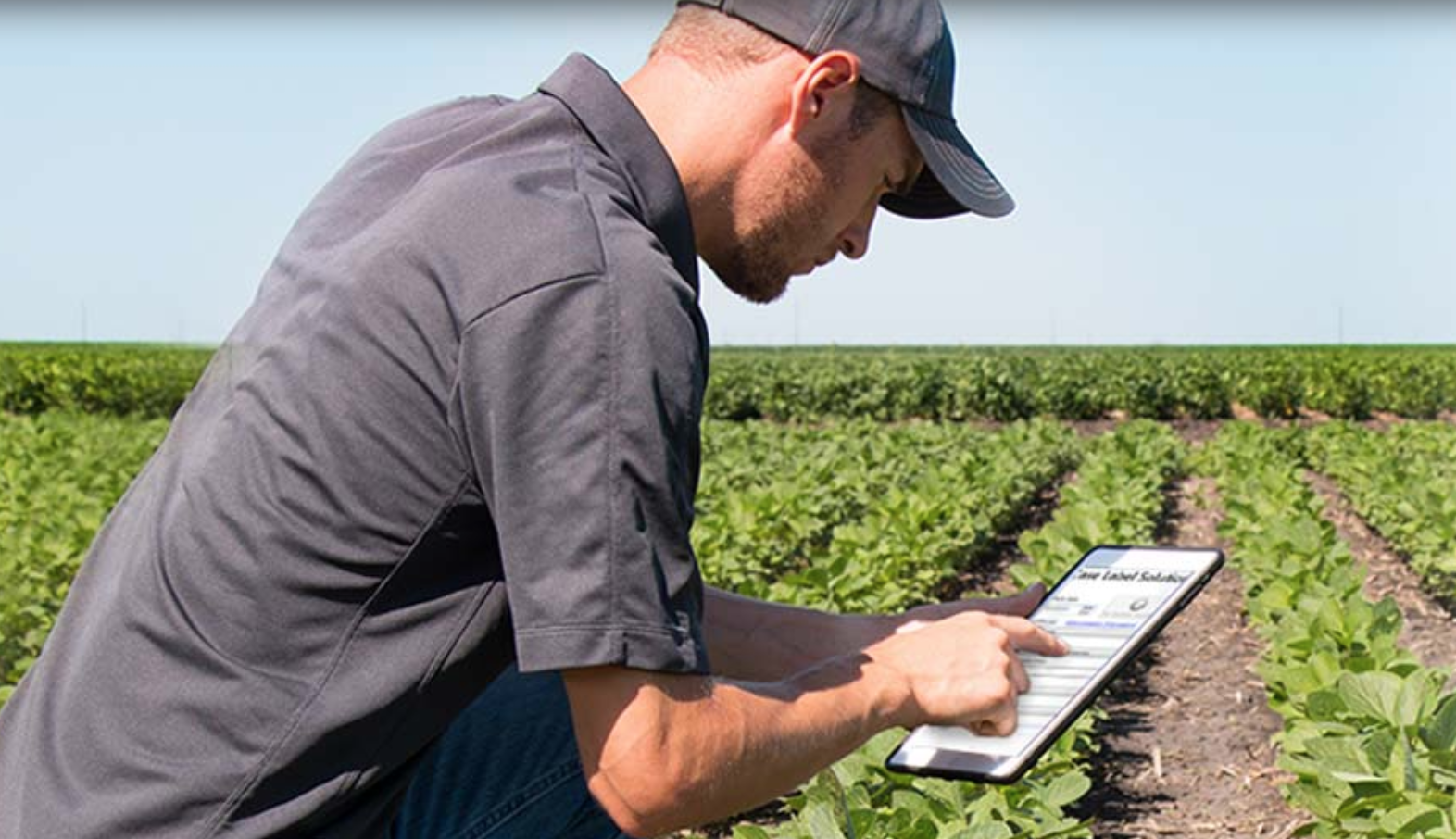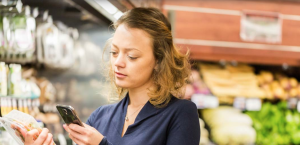How Traceability Can Increase Food Safety and Boost Farm Profits
May 19, 2019

By Minos Athanassiadis, Business Area Director – HarvestMark
When an E. coli outbreak was linked to romaine lettuce last fall, it illustrated the importance of traceability in agriculture.
Without sufficient information to pinpoint the particular farm and fields where the tainted lettuce was coming from, the Center for Disease Control (CDC) advised the public to avoid consuming romaine lettuce and destroy any that was in their homes, while the Food and Drug Administration (FDA) requested all romaine lettuce on the market be withdrawn and destroyed.
“The FDA made this request because initial information available at that time had not identified a likely source for the outbreak that would allow a targeted request,” a statement issued by the FDA on Nov. 26, 2018 explained. “… [A] market withdrawal was the fastest way to remove the potentially contaminated product.”
By the time the outbreak was over, 62 people from 17 states had contracted E. Coli from the contaminated lettuce, with 25 ending up in the hospital. It also resulted in tens, if not hundreds, of millions of dollars in losses for romaine lettuce growers.
While food safety crises are a prime example of the benefit traceability can play in the food industry, it’s not the only driver of this movement.
More consumers are seeking knowledge about where their food comes from and how it’s made. By embracing higher levels of traceability, fresh fruit and vegetable growers have an opportunity to better serve their customers and create a brand that could lead to premium pricing and higher profits.
Traceability Today: Case-Level Traceability
The current level of traceability on the market stems from the Produce Traceability Initiative (PTI). As a result of previous food safety crises, the industry got together and developed the initiative, which almost every grower, packer and shipper abides by — otherwise, it’s much harder for them to sell their products. The few who don’t follow the initiative have to sell their product at a deeper discount than is warranted.
The PTI requires case-level traceability, which HarvestMark was one of the pioneers in establishing.
Case-level traceability is when everyone who touches a case of product, such as mixed lettuce or strawberries, is able to trace it one step back and one step forward.
It starts with a code being placed on the case before it leaves a field or processing plant to go to a retailer or food service distribution center. Those at the distribution centers then scan the product before it moves onto the retailer.
The issue and concern with case-level traceability is that retailers don’t often scan the PTI barcodes as part of their receiving protocol. When a produce clerk puts the product on the shelf at the store, the case is often thrown away, effectively cutting off its traceability. So when a consumer takes a bag of romaine hearts home, they’re unable to tell where that lettuce came from.
With the romaine lettuce crisis, if retailers had scanned the product at the store level and not just the distribution centers, the FDA would have been better able to pinpoint the source of the bad romaine much faster, which likely would have reduced the amount of lettuce lost, as well as the number of people who became ill.
Unfortunately, it’s unlikely that grocery retailers will implement this in their store-receiving protocol in the future. Because they work in a very low-margin business, updating their software and having personnel in place to add this step is probably too steep of a cost.
Item-Level Traceability Tracks Food from Field to Fork
However, growers could bypass relying on the retailer altogether by adopting item-level traceability, another solution developed by HarvestMark.
Item-level traceability is where every single product has its own unique QR code that the consumer can scan with his or her smartphone to learn more about the product. This information can include the field and lot where the product was harvested, the date it was harvested and sometimes even the crew that harvested it.
Because it can trace food from field to fork, item-level traceability can better assist the FDA in tracking sources of tainted food over case-level traceability. In fact, HarvestMark is currently working with a large grower trade organization to try to establish an item-level traceability system for this purpose.
It can also keep consumers informed about food safety concerns and help them avoid tainted products. David Barton, Trimble Product Market Manager for the North America Region, recently experienced this as a consumer.
After shopping at Costco, he says he received a call from the company that, according to their records, he had purchased a product that had been recalled due to a food safety issue. The company specified that the recall only applied to those that had a certain best-if-used-by date. From there, Barton was able to determine whether that recall applied to him and if he needed to toss the product.
“This is a very immediate process when Costco’s able to whip out their data collection in a very short time,” he says. “Well, farms are getting to where they’re going to have to be able to do that.”
Consumers’ Desire for Info Drives Traceability Movement

But the benefits of item-level traceability go beyond food safety. Growers can also utilize this technology to build stronger relationships with consumers, who are increasingly searching for information about their food and where it comes from.
With the internet available at our fingertips, consumers are able to access more information about their food unlike anytime before, and their desire for even more knowledge is predicted to continue growing.
The International Food Information Council (IFIC) Foundation named discovering a food’s origin story as one of the five food trends to watch in 2019 and results from the foundation’s 2018 Food and Health Survey back this up. When asked how important knowing where food comes from:
- Over 50% said it was at least somewhat important
- Just over 20% rated it as very important
- Less than 10% said it wasn’t important at all
But consumers don’t just want to know where their food comes from — they also want information on how their food is produced.
In 2018, just under 50% said that understanding how their food is produced was at least somewhat important, up from just over 40% in 2017. About 45% indicated that being able to access information about how their food was produced was at least somewhat important.
As a result of consumers asking for more transparency and clarity about their food and where it comes from, we can expect traceability to increase, not only in the fresh produce industry but also in the meat industry. Meat processors are now asking for help in providing information to the retailer and consumer about the particular animal the meat came from and how that animal was treated.
Grain growers, however, will probably not have to worry about traceability because the structure of the grain industry — the amount of mixing and consolidation involved after the grain leaves the farm — makes it very difficult to trace, and the market is currently not demanding that level of traceability for grain products.
Tracing from Farm-to-Fork with Trimble Technology
The good news for growers is that the technology needed to provide consumers with more information already exists.
Using Trimble Ag Software functionality, growers can record information about a plant from the moment it’s seeded all the way through harvest, such as its planting date, amount it was irrigated, chemicals and fertilizers applied to it, when it was harvested, etc.
All of that information can then be tied in post-harvest with HarvestMark item-level functionality and tracked until it reaches the consumer, who can then scan that product’s QR code with their phone and have access to as much information about that product as they could want.
Growers implementing sustainable farming practices will also be able to use this technology to quantify those practices, which could be used for marketing purposes to the consumer. According to global measurement and data analytics company Nielsen, sustainability is becoming more important to consumers in regards to food transparency, noting that sustainable product sales have increased by 20% since 2014.
Ensuring Brand Authenticity
Part of providing consumers with information about where their food comes from is also ensuring that the product is really what the packaging says it is, and not a counterfeit.
That’s the case for Zespri, a New Zealand-grown brand of kiwi that is highly prized in China. With kiwis also being native to China, some Chinese growers have copied the Zespri box and are packing them with their own kiwis in an attempt to sell them for a higher price.
By using the HarvestMark code, receivers can tell if the kiwis are truly a Zespri product or if they’re fake. For growers and companies who have developed a brand like Zespri, the anti-counterfeiting capabilities of item-level traceability can be a major benefit in protecting their brands and reputations.
Using Traceability to Create a Brand and Charge Premium Prices
However, many growers have not developed a brand name like Zespri or Cutie’s mandarin oranges. Instead, they see themselves as being in a commodity business. Without being able to differentiate their product on the basis of unique attributes, such as flavor, appearance or size, they end up differentiating their product based on price.
But with traceability, growers can start a conversation with consumers and try to differentiate themselves from others.
Driscoll’s Berries is an example of a company that has succeeded in this. For the last decade or so, Driscoll’s has been placing unique QR codes on the bottom of their clamshell packaging that allows customers to join the company’s online consumer panel and provide feedback. In return, Driscoll’s sends them coupons and holds contests for them. The online consumer panel has done so well, the brand has more than half a million consumers participating in it.
As a result, Driscoll’s has been able to differentiate their product enough that they can charge a premium price for their berries compared to their competitors, while also gaining consumer trust.
There are also a number of retailers who support that level of traceability and transparency, so they’re willing to pay a little more to have those products in their stores and communicate to their customers that they only buy the safest, most traceable and highest quality product out there.
By adopting a higher level of traceability, growers can not only help protect their customers and products from food safety concerns but differentiate themselves enough to create a brand that will increase their prices and improve their bottom lines.
